Thecus M3800 Media Server. Raid 5 comes home
Most recently, I wrote about one simple NAS server from this company - Thecus N1200 . And if it was intended more for home use, today I’ll tell you about another device, which will not be a shame to put in a large company;).
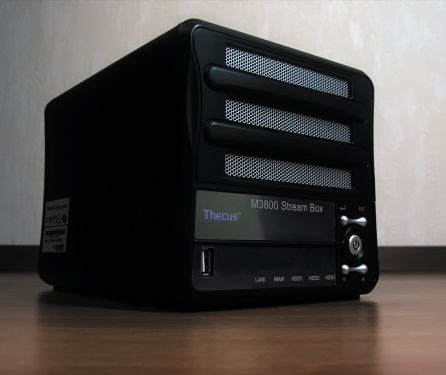
Meet - Thecus M3800. Overview, traffic.
It’s a pity, but after my first review, Thecus Technology did not become a leading network manufacturer, so PR again;) Today, the box in front of me is almost twice as large as the previous one. This time, there are few tables with specifications on it - all in dark colors, sunsets, palm trees, steamers ... and a convenient plastic handle for easy transportation. Okay, enough about romance, I open.

It is good that materials that protect against bumps and falls are a habit among many manufacturers. So here - the thickness of the armor in which were:
- Thecus M3800 media server ;
- Remote control to it;
- Network adapter and power cable to it;
- Patch cord 1 meter long;
- Composite and component cable;
- Booklet + manual;
- Disk with software;
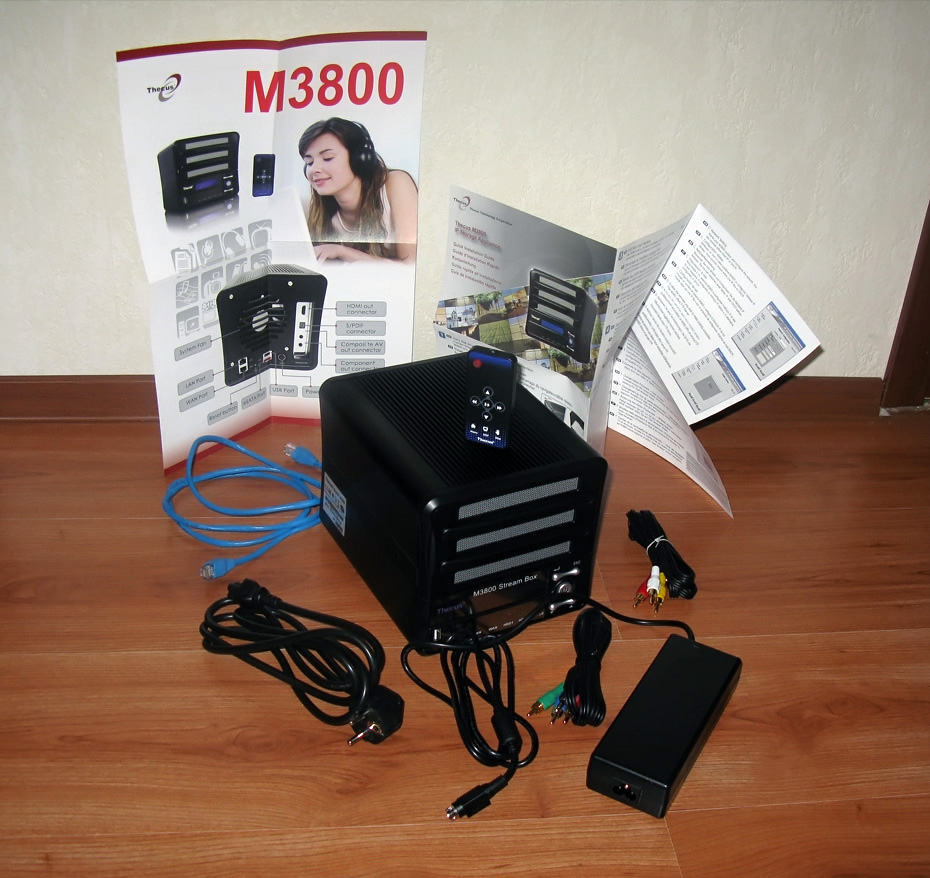
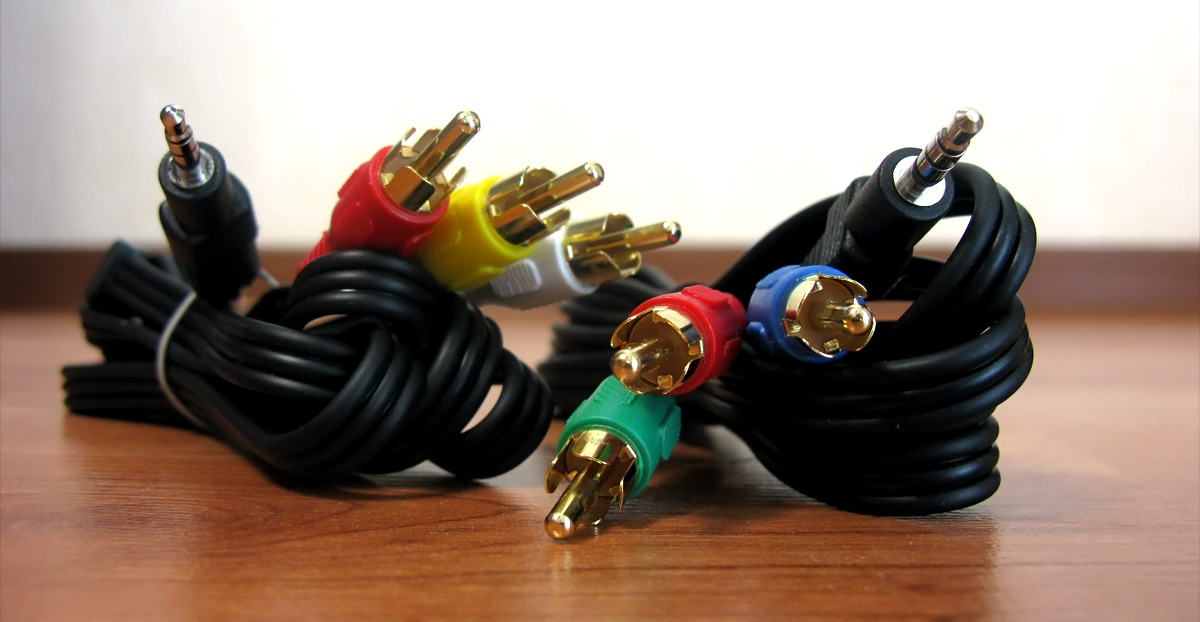
We’ll see the disk later; the manual is an unfolding color booklet. It is a pity that there are no instructions with a detailed description of all elements of the system. The adapter to power the device is the same as the previous server, from the FSP.
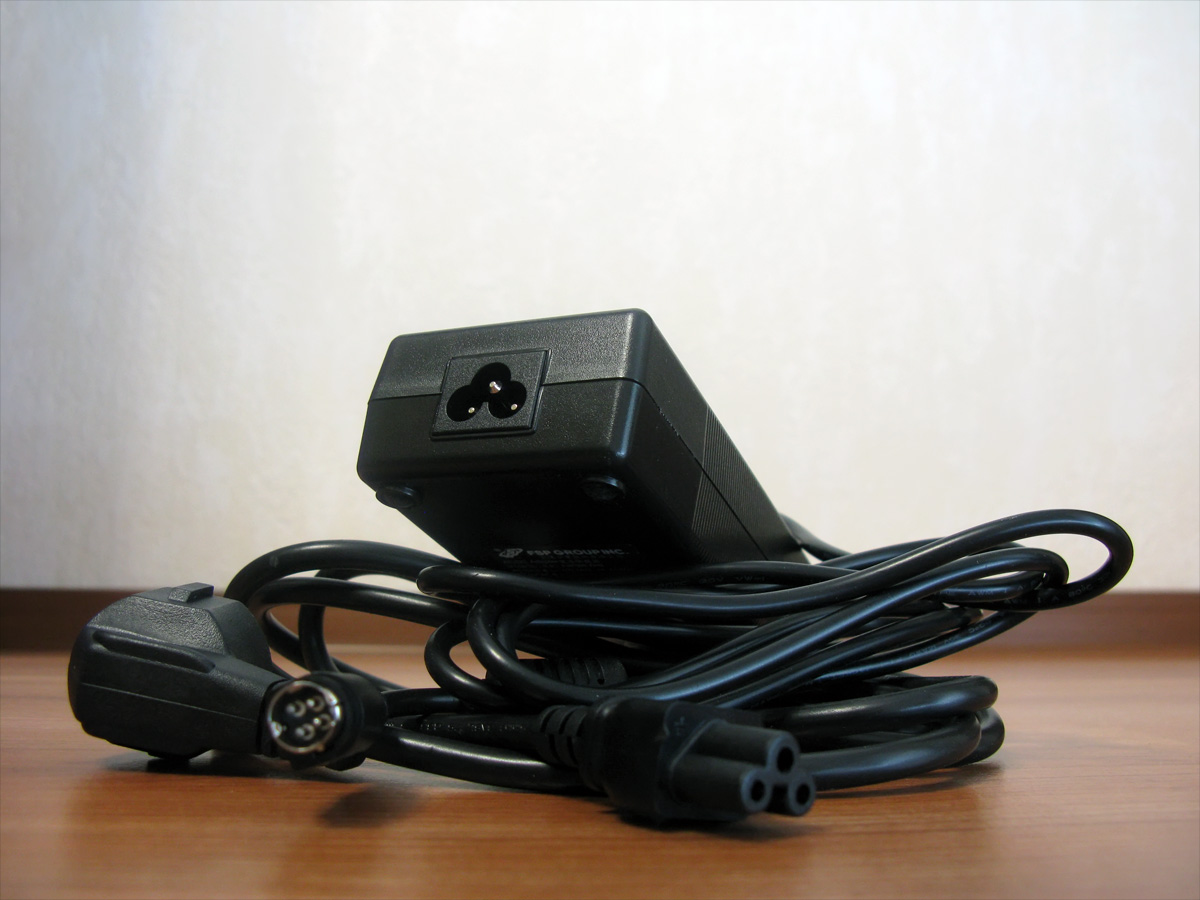
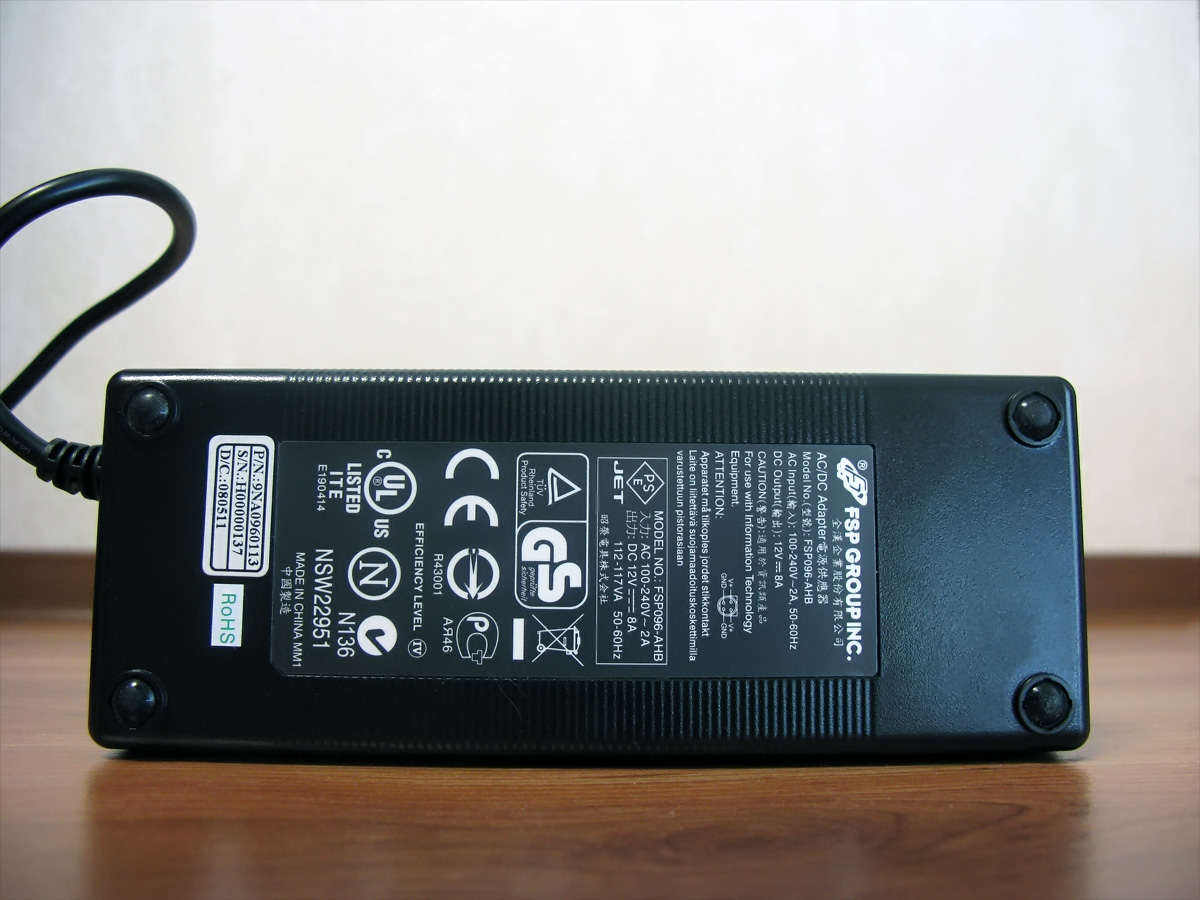
The dimensions of the device (HxWxD, mm) are 58x173x218. It is completely metal (from two U-shaped profiles, the wall thickness is about 3 mm), which is why it is very heavy and in the off state it is not just cool - it is cold. A removable plastic grill in black and silver flaunts on the front side, under it there is a mirror insert on which an informative LCD display is located. Under the display are operation indicators (LAN, WAN, HDD1-3) and a USB port for connecting external devices. To the right is the button in (s) the device and 4 buttons (made by two "rockers") to navigate the device screen.
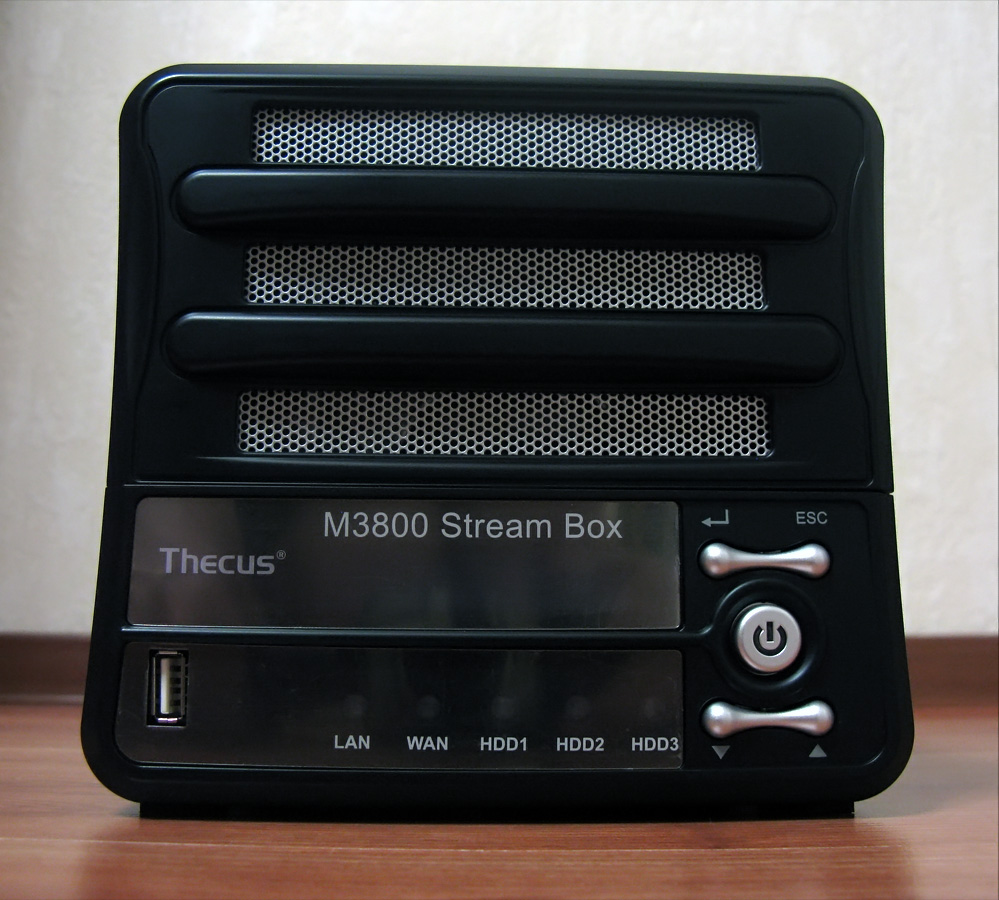
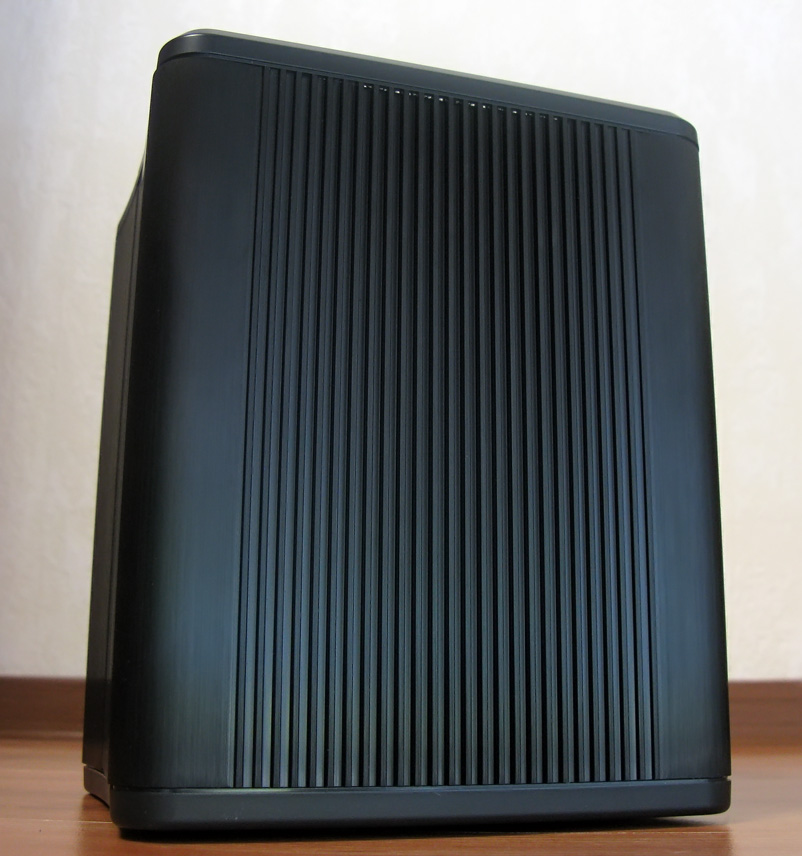
Compared to the tank)
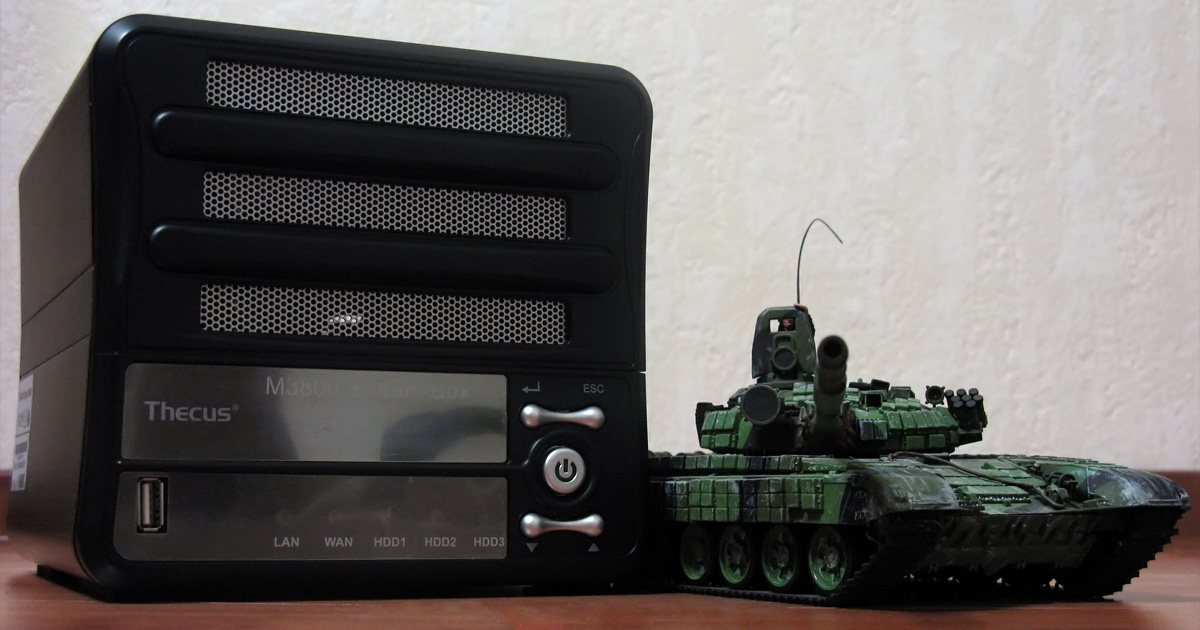
On the back side are gigabit LAN and WAN, 1 x USB (2.0, for connecting flash drives, cameras and other printers) and 1 x eSATA (for connecting external drives); reset button, hole for powering the device; socket with connectors: composite, component, S / PDIF and HDMI. Yes, above all this is a cooler with automatic speed control, hidden behind bars.
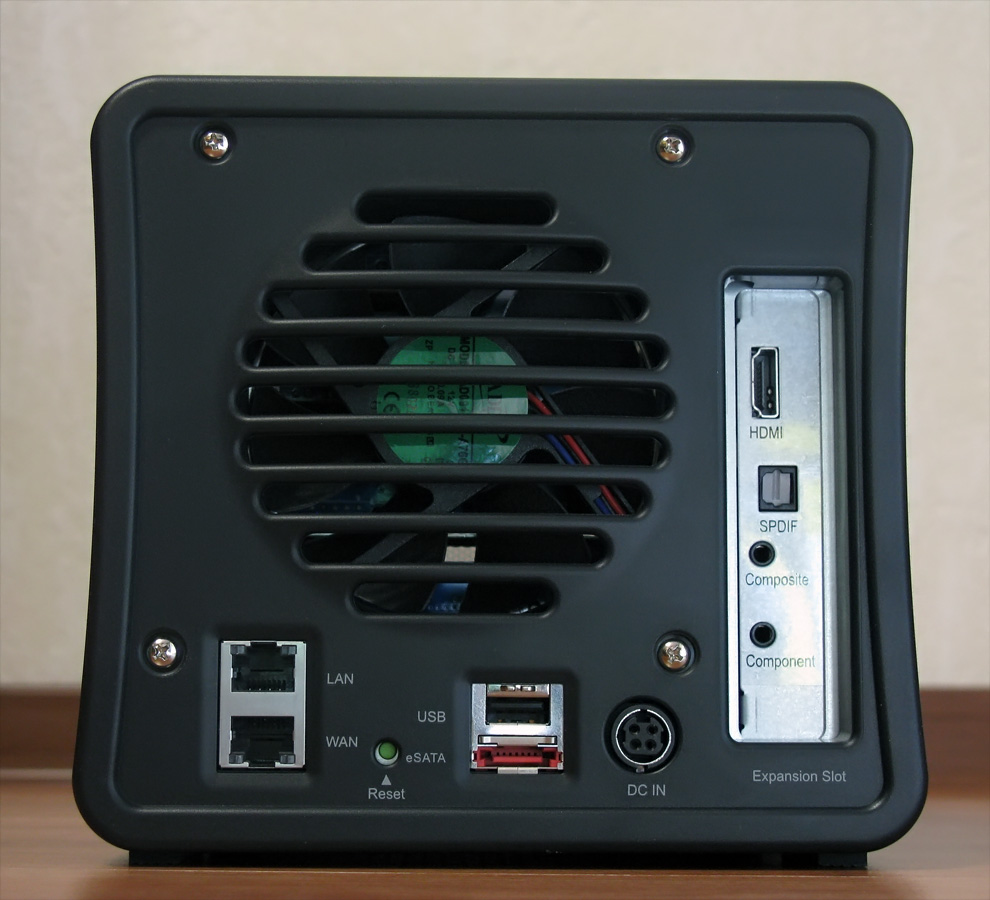
Inside the device is an AMD LX800 processor operating at a frequency of 500 MHz; CS5536 chipset and 256 megabytes of DDR memory (SODIMM). Even at maximum load, the device does not consume more than 100W.
For the device to work as intended, at least one hard drive must be installed in it. The sequence of actions is this: with a slight movement of the hand, the protective net rises from the front panel of the device, then the fixing brackets are unscrewed. It's nice that you can do without a screwdriver - the arms are twisted and twisted by hands, it is very nice to do this (due to the springing mechanisms inside). Braces with special protrusions cling to holes for bolts on the hard - something cannot be inserted incorrectly. I have three disks (Seagate Barracuda, 500 Gb, 7200rpm, SATA) at my disposal, which I installed sequentially. All is ready.
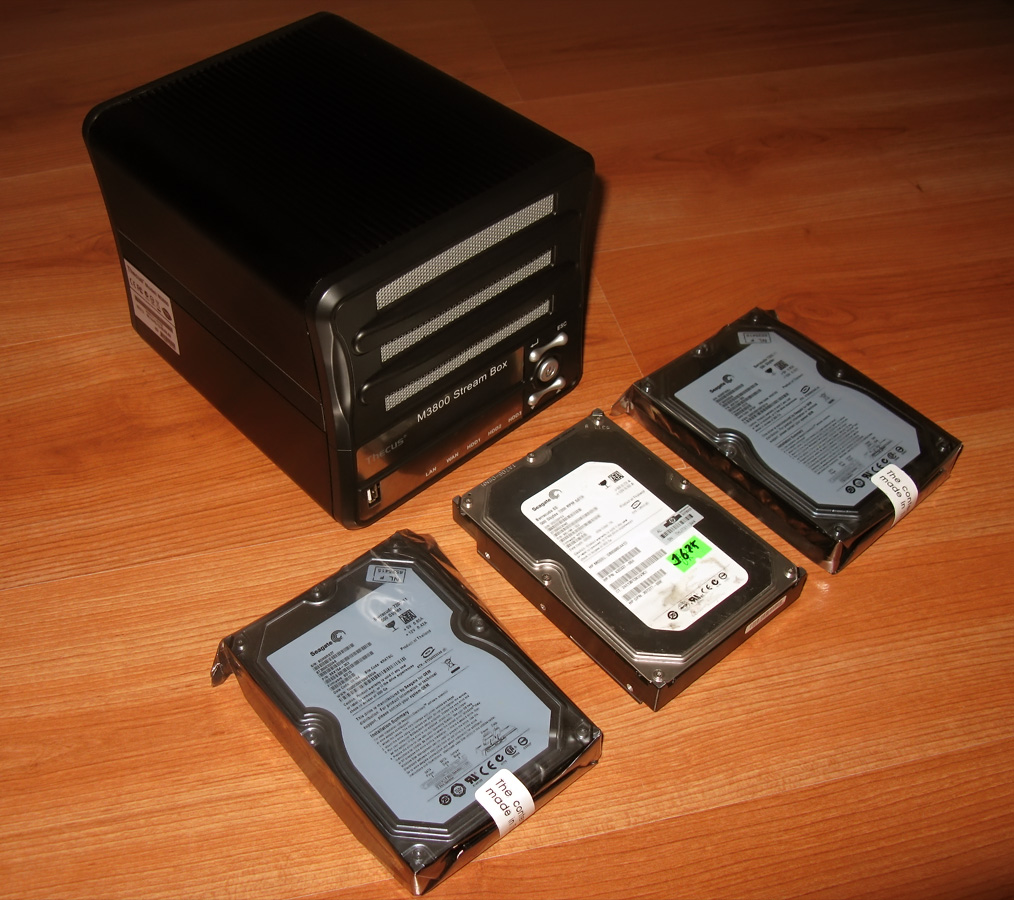


I connect the WAN port of the server and the free port of the router with an ethernet cable.
I turn on the device - the silence is broken by a barely audible hum of the cooler - hard drives work a little louder, although they are almost inaudible. They start, judging by the sounds (and by indication), sequentially, with a small interval. Indicators are lit in orange and blue, quite bright.
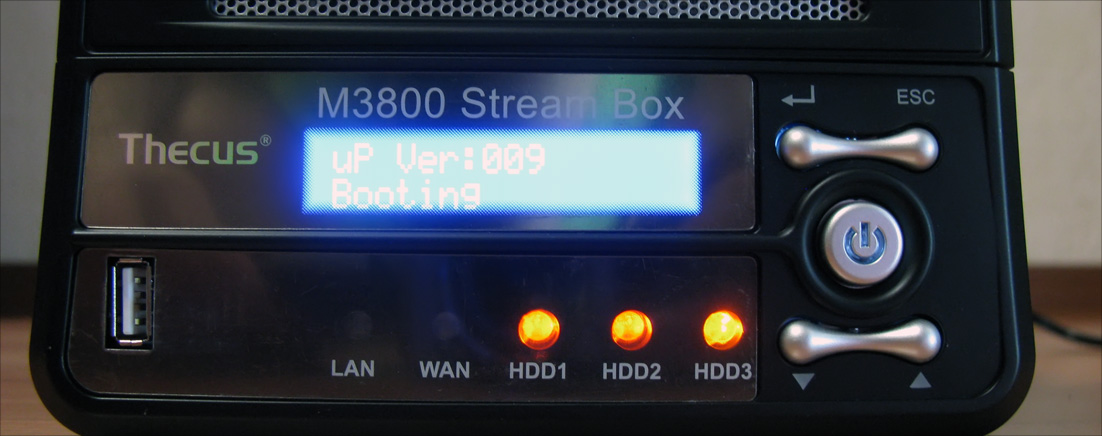
You do not need to install any programs - after turning on the admin panel is accessible from any browser. It’s convenient that you don’t need to guess what IP address the device is on - it is written on the indicator.
As you have already noticed, and as I said, the device has an external display. It is with blue backlighting, white-blue text is displayed on it (2 lines of 16 characters each) - it reads well, but it merges in photos.
The device’s progress is displayed, and after setting the normal operating mode, the following information
is displayed sequentially: - WAN IP, LAN IP, RAID (type), fan speed (revolutions per minute, RPM), internal temperature (in degrees Celsius or Fahrenheit), date , uptime, firmware version and host name. The same indicators can be switched by pressing the button next to the screen.
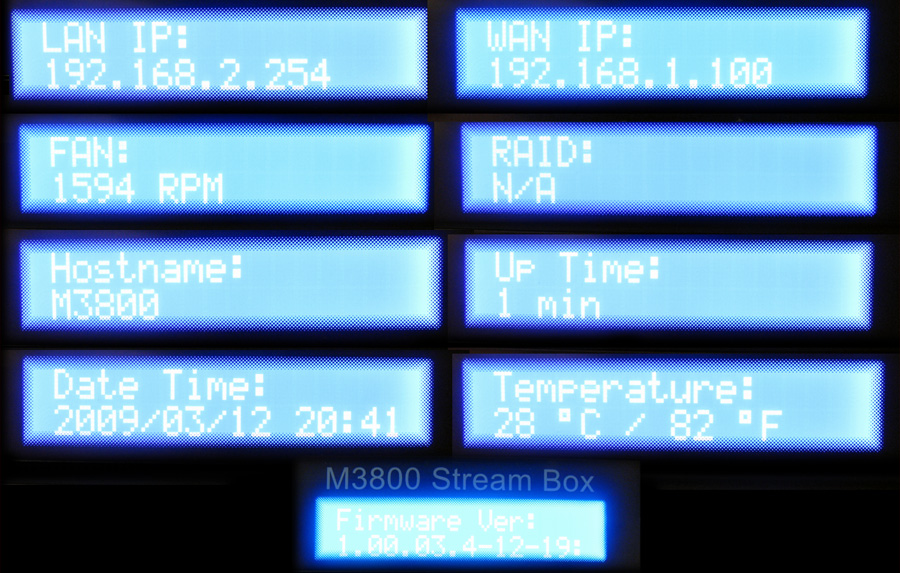
In my opinion, such an indicator as “Number of free space in the array” is very lacking, and since everything is in English, it’s something like “Free disk space”. After all, what capacity do not put the disks - you can always get carried away by copying or downloading files and not notice how the disks become clogged. Also, the inscription “SMART - OK” would not hurt).
The server administrator’s web interface is initially located at 192.168.1.100 (login / password is admin / admin) - as I said, this can be found from the device indicator. Immediately after a successful login, a data plate appears - the type of device, firmware version, and operating time. Externally, the interface is very similar to the one I’ve already talked about. But it was not without innovations.
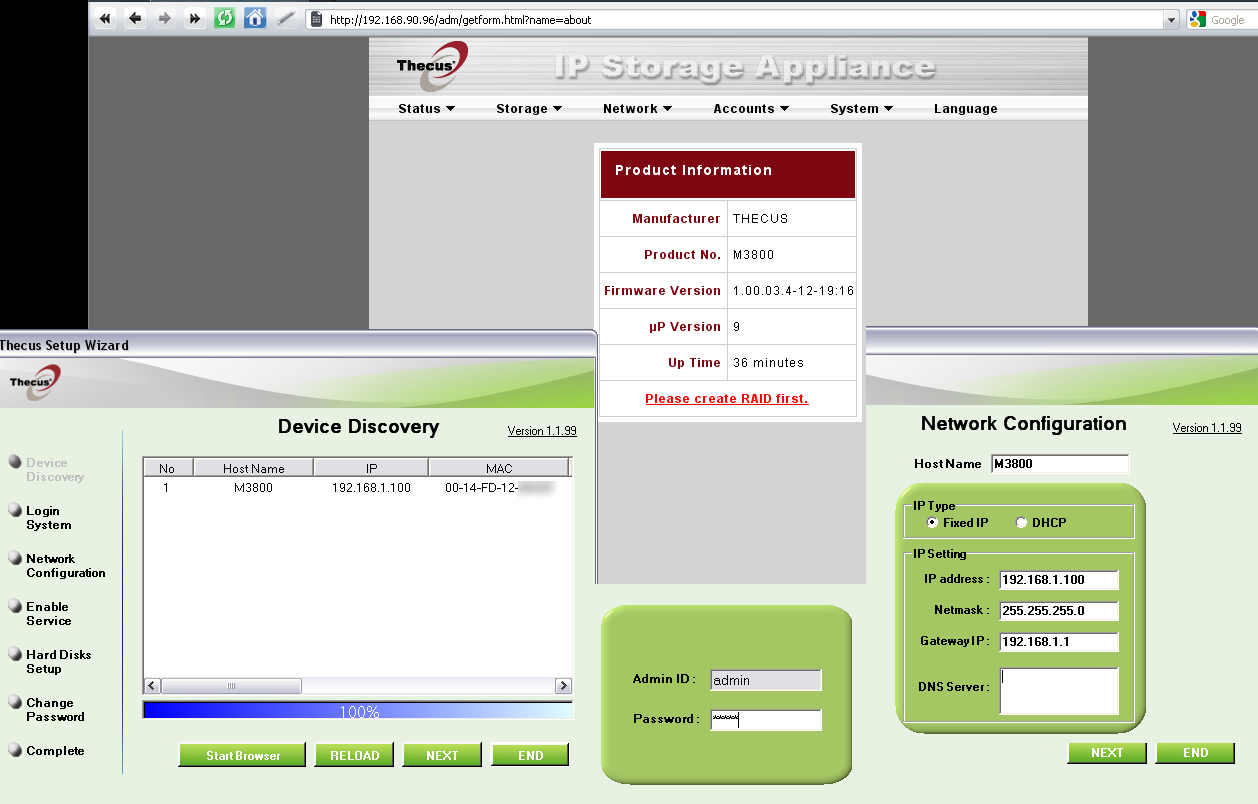
The first thing you have to face after installing blank disks is creating an array. Nothing can be done without fulfilling this point - even changing the language. Although, there are so primitive inscriptions that even a schoolboy can understand them. By the way, since we are talking about languages - there are as many as 10 of them in the admin panel, which is certainly good.
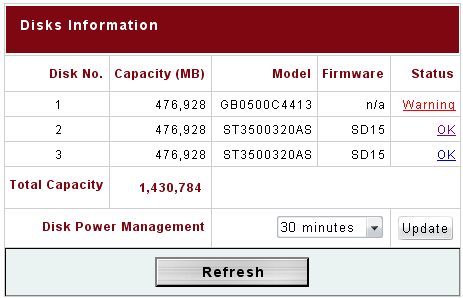
A choice of 4 options for arrays - JBOD ,RAID0 , RAID1 and RAID5 .
If you have only one drive at your disposal, then you have no choice, as such - only JBOD.
Jbod array- One of the easiest options (you need at least one drive) and is useful to someone who has nothing to reserve. In this case, all disks (even if they are of different sizes) will be one single array - its capacity will be the total volume of all disks. On such a field (it’s a pity that the disk with the current software does not hold disks more than 1 TB, i.e. the maximum at the moment is 3 TB), you can store a huge amount of the crop - music, videos and photos. However, it is worth remembering that sooner or later any of the disks may fail, and it is not known which information will be stored on it. I left this option for myself, because everything important has been reserved for me for a long time, but I don’t want to spend extra gigabytes;)
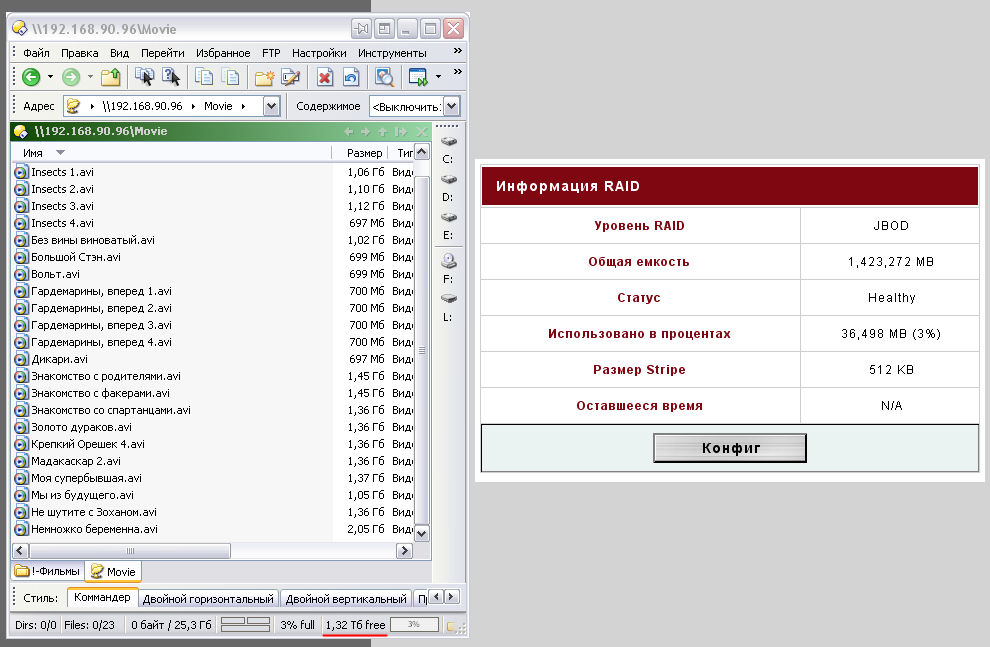
If you have two disks, you can try RAID 1 or 0.
The first option is RAID1(A disk array with duplication or mirroring or Duplexing & Mirroring ) is suitable for those who have documents of a high level of importance - information is stored on one disk, the second acts as a “mirror”. In this case, we have a gain in reliability, but in half we lose in volume.
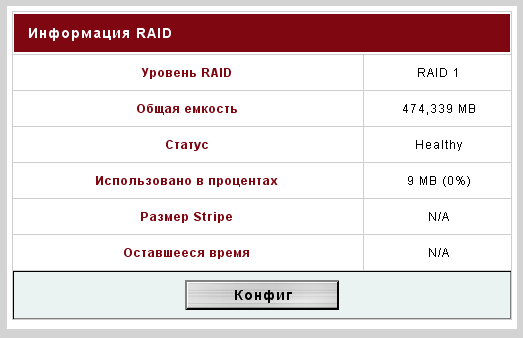
RAID1 Advantages - simple implementation, ease of array recovery in the event of a failure (copying), high enough speed for applications with high query intensity.
Cons RAID1 - only half of the volume of the array is available for recording, low data transfer speed.
The second option, RAID0 ( High-performance disk array without fault tolerance orStriped Disk Array without Fault Tolerance ), allows you to win in speed - data divided into fragments is written to both disks in parallel, however, if one of the devices fails, all information is lost.
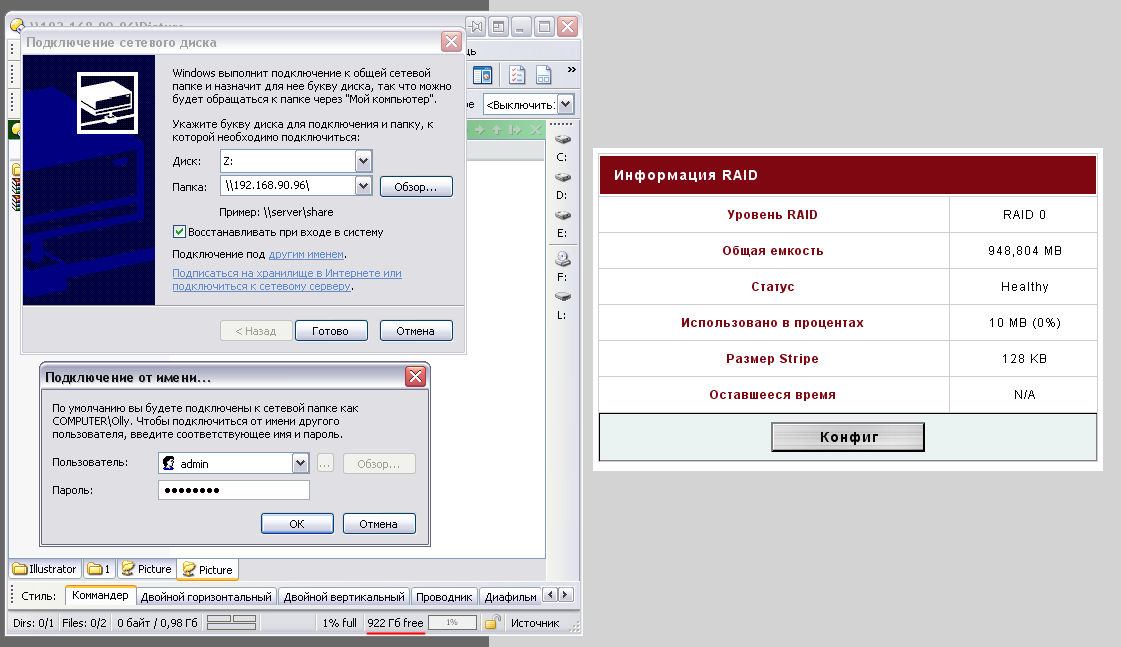
Pluses RAID0 - simple implementation, highest performance for applications requiring intensive processing of I / O requests and large data volumes.
Cons RAID0 - not a fault-tolerant solution (failure of one drive entails the loss of all data in the array).
Having three disks, you can use any of the arrays described above, and another one that I haven’t mentioned is RAID5 ( Fault-tolerant array of independent disks with distributed parity orIndependent Data disks with distributed parity blocks ).
What does he give? In the fifth raid, two disks will be used to store files. Another, third - is allocated for storage of redundant information (checksums) necessary for data recovery in case of failure of one of the two disks. And since the checksums are written to all the disks of the array, this makes it possible to perform several read or write operations simultaneously. In this case, we win both in speed (reading) and in reliability. This option is very versatile and can be used in many situations - the inscription on the box “RAID5 comes home” is written not in vain) By the way, the process of creating a RAID5 array in my case (with formatting) took as much as 470 minutes! With the other options much faster - a couple of minutes and you're done. The temperature after all these shamanisms was at 38 degrees.
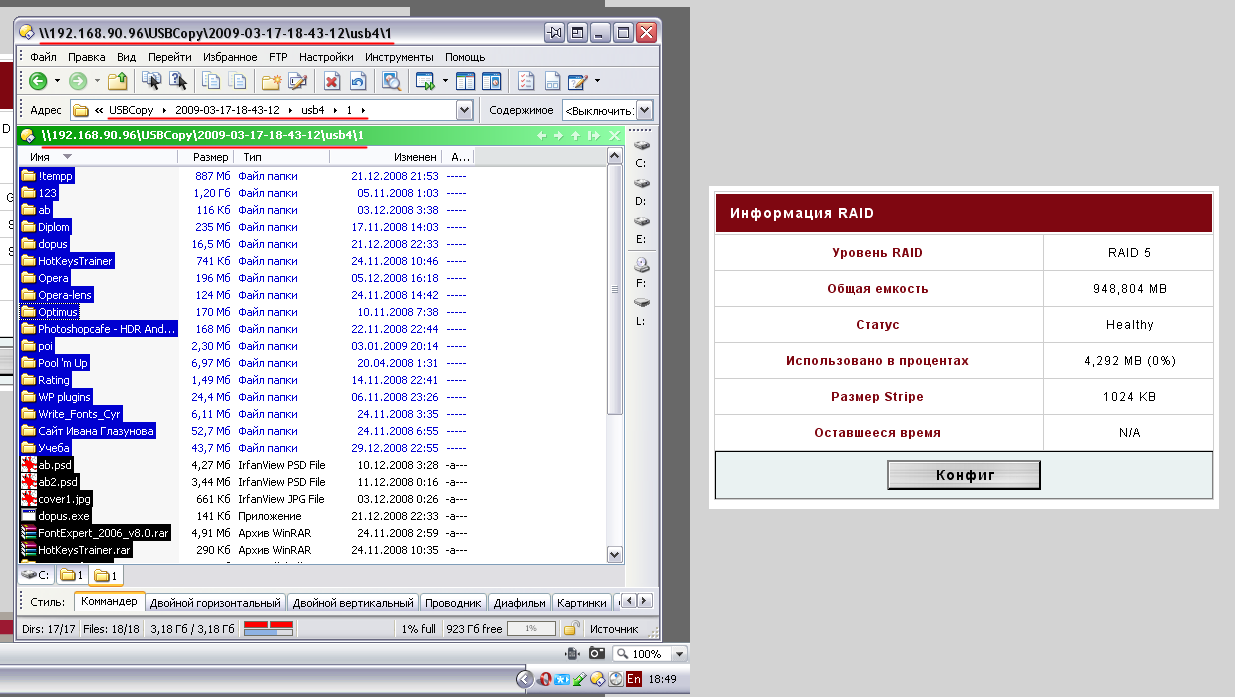
RAID5 pluses - high speed of data writing, rather high speed of data reading, high performance with high intensity of read / write data requests, reliability.
RAID5 cons - low read / write speed of small data with single requests, complex data recovery.
Whatever option you choose, you can start using the device immediately after the creation of the array. The necessary folders will immediately appear in the system environment, or the device can be connected as a network drive.
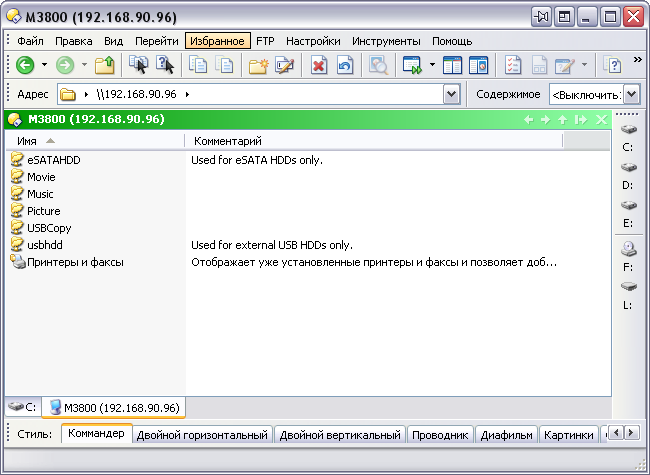
You can start the FTP server - this is done quickly, but everyone can use it right away with the right settings. iTunes server, photo server (through the XP Publishing Wizard service), print server, download manager - I already wrote about this and here, of course, it is also present. There is still the opportunity to connect a webcam.
I really liked the ability to mount ISO-images - at the same time you can connect no more than 200 pieces! Yes, an ordinary user will not need so much (and there are not so many free letters, by the way, in the system) - but this can be very useful for a network. It is a pity that only ISO files are supported, although they are the most common. I downloaded the image, pressed a couple of buttons and you can already use it as a regular folder.

11 seasons (23.5GB) video " How it's made"Flooded onto the server in 34 minutes, simple mathematical calculations give a speed of 10Mb / s.
4.5 gigabytes from a flash drive (small files) were copied in 4.5 minutes - a speed of 16.5Mb / s.
I think the speed depends on the screws themselves ... it would be nice to test on the WD RE3 server screws available now , but I only had these three disks, and one of them (with a green sticker) differs from the other two in a smaller cache (16mb versus 32) , the number of plates and, accordingly, the heads. It is likely that this difference negatively affects the speed of work, because it is desirable that all disks are the same.
The speed indicators of this system (and the older office brother - Thecus N4100Pro ; Software - Intel NAS Performance Toolkit ):
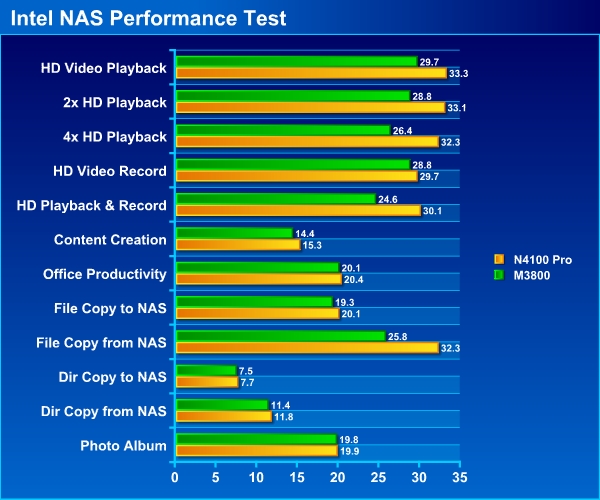
Honestly, I could not verify this, because I have neither a monitor with HDMI, nor even a TV) However, furrowing the vast expanses of Runet, I came across an overview of the same device by the notorious Alex Exler . Here is what he writes on this subject:
“ I just had a very good collection of ordinary videos of various formats, as well as videos and films in the Hight Definition format, since this HD player seems to support it.
With conventional video formats, the results were modest. Plays MPEG-2 (AVI, MPEG), MPEG-4 (DivX, XviD), WMV. It doesn’t play any disk images as a class, only VOB sees and plays from folders from DVDs - generally speaking, this is very bad: the player must understand either just a DVD folder (that is, run VIDEO_TS.IFO), or at least some of the image standards - ISO, NRG, SDF.
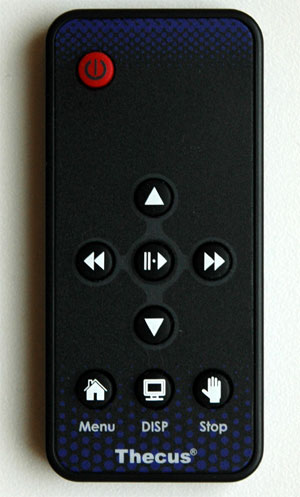
With High Definition, the results are even more modest. Reproduces unprotected WMV9, WMVHD, AVI, TS, XVID, H.264, VC-1. However, it does not understand how the Matroska (MKV) container is a class, in which 80% of the compressed Blu-ray, M2T and M2TS are written. That is, we can say that High Definition support is done at the level of “show guests beautiful HD videos in WMV”, nothing more. Because without Matroska you can’t see Blu-ray pinched from torrents, and without M2T and M2TS support you can’t see Blu-ray images.

I’m silent about the fact that without at least the Goto button, High Definition movies are impossible to watch - fast-forward on them in all players works slowly and very crookedly.
Well, it should be noted that the player does not understand the USB drives connected to it - this function only works with NAS.

As a result, the impression of the M3800 as a player is an order of magnitude worse than that of it as a NAS. However, I must say that the manufacturer honestly writes: a NAS with multimedia functions does not at all position the M3800 as a full-fledged media player.
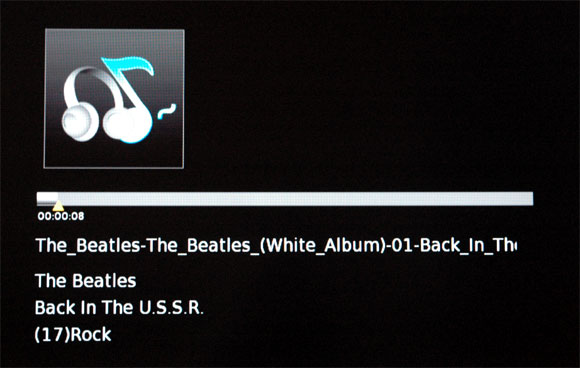
Therefore, if we consider the player capabilities as a pleasant addition to the NAS, then everything falls into place: running cartoons for kids or a mother-in-law downloaded series will turn out without any problems. Something more serious - it is already necessary to use a more advanced media player.
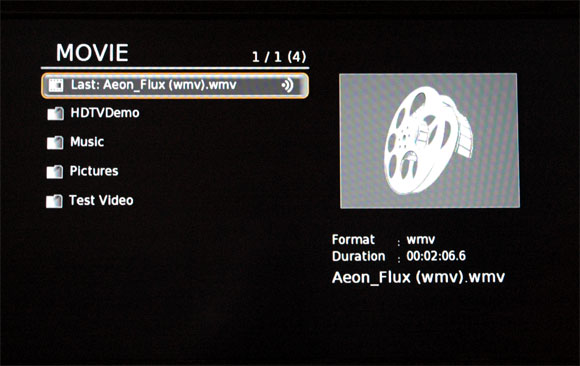
However, the developers say that they will develop the player part. The next version promises an advanced remote control and advanced features. Let's see, in short. Of course, it would be convenient to have everything in one bottle. "
Actually, I initially thought it would turn out that way - after all, the manufacturer specializes in a data storage device, and not in media players.
As it turned out, the bias in this device was made more towards network storage than towards the media player. However, with the latter function, the device, albeit not very well, but copes.
As I already said, the device will not be ashamed to put it in a prominent place in the office, but you should pay attention to the fact that the device does not have any “anti-theft” capabilities (at least locks on disks). Therefore, an office is an office, and no one steals anything at home! ) By the way, the manufacturer’s warranty is 2 years.
About the system:

Cons
- For some reason, you need the NET Framework 1.1;
- No detailed documentation;
- Minor flaws in the administration panel (admin);
- Bright LEDs (if the device is on the desktop - torment at night);
- High cost (25 000 rubles without drives);
Pros
- Stylish appearance and excellent assembly;
- Completely metal case - positively affects the climate inside and noise insulation;
- Informative indicator;
- Easy to use admin panel;
- Silent work;
- The possibility of flashing;
- Good speed;
- Remote control;
It seems that DLNA devices seriously decided to “digitize” our four-wall structures - all kinds of players, telephones, cameras, media centers appear like mushrooms after rain. And since these networks are growing, the issue of information storage is becoming more and more relevant - you must admit, it’s not a matter of storing photos on a camera, music on a player, and movies somewhere else. Everything should be in one place and it is important that this very place can be easily managed at any time.
There is a media player function in this device, but it is not key - perhaps representatives of the country of rice plantations will correct the shortcomings by releasing new firmware, because the device is not so old. But Thecus M3800 is guaranteed to cope with the task of storing information, along the way providing a lot of additional features - both on the other side of the IR receiver, and inside (in the admin panel).
If you really have a need for such a device, I advise you to pay attention to the other two devices of the same company - 4-disk N4100 + (16 thousand rubles) and N4100PRO (22 thousand rubles). The first has lockable trays (suitable for the office), the second has excellent speed indicators, but all three devices have many differences.
It remains to buy a TV set, to collect a romantic selection of music on gigabytes of the array and stop missing spring romantic moments!
Soon a review of new items from Razer. Good luck!

Meet - Thecus M3800. Overview, traffic.
It’s a pity, but after my first review, Thecus Technology did not become a leading network manufacturer, so PR again;) Today, the box in front of me is almost twice as large as the previous one. This time, there are few tables with specifications on it - all in dark colors, sunsets, palm trees, steamers ... and a convenient plastic handle for easy transportation. Okay, enough about romance, I open.

Equipment
It is good that materials that protect against bumps and falls are a habit among many manufacturers. So here - the thickness of the armor in which were:
- Thecus M3800 media server ;
- Remote control to it;
- Network adapter and power cable to it;
- Patch cord 1 meter long;
- Composite and component cable;
- Booklet + manual;
- Disk with software;


We’ll see the disk later; the manual is an unfolding color booklet. It is a pity that there are no instructions with a detailed description of all elements of the system. The adapter to power the device is the same as the previous server, from the FSP.


Appearance
The dimensions of the device (HxWxD, mm) are 58x173x218. It is completely metal (from two U-shaped profiles, the wall thickness is about 3 mm), which is why it is very heavy and in the off state it is not just cool - it is cold. A removable plastic grill in black and silver flaunts on the front side, under it there is a mirror insert on which an informative LCD display is located. Under the display are operation indicators (LAN, WAN, HDD1-3) and a USB port for connecting external devices. To the right is the button in (s) the device and 4 buttons (made by two "rockers") to navigate the device screen.


Compared to the tank)

On the back side are gigabit LAN and WAN, 1 x USB (2.0, for connecting flash drives, cameras and other printers) and 1 x eSATA (for connecting external drives); reset button, hole for powering the device; socket with connectors: composite, component, S / PDIF and HDMI. Yes, above all this is a cooler with automatic speed control, hidden behind bars.

Inside the device is an AMD LX800 processor operating at a frequency of 500 MHz; CS5536 chipset and 256 megabytes of DDR memory (SODIMM). Even at maximum load, the device does not consume more than 100W.
Training
For the device to work as intended, at least one hard drive must be installed in it. The sequence of actions is this: with a slight movement of the hand, the protective net rises from the front panel of the device, then the fixing brackets are unscrewed. It's nice that you can do without a screwdriver - the arms are twisted and twisted by hands, it is very nice to do this (due to the springing mechanisms inside). Braces with special protrusions cling to holes for bolts on the hard - something cannot be inserted incorrectly. I have three disks (Seagate Barracuda, 500 Gb, 7200rpm, SATA) at my disposal, which I installed sequentially. All is ready.



I connect the WAN port of the server and the free port of the router with an ethernet cable.
Work
I turn on the device - the silence is broken by a barely audible hum of the cooler - hard drives work a little louder, although they are almost inaudible. They start, judging by the sounds (and by indication), sequentially, with a small interval. Indicators are lit in orange and blue, quite bright.

You do not need to install any programs - after turning on the admin panel is accessible from any browser. It’s convenient that you don’t need to guess what IP address the device is on - it is written on the indicator.
Screen
As you have already noticed, and as I said, the device has an external display. It is with blue backlighting, white-blue text is displayed on it (2 lines of 16 characters each) - it reads well, but it merges in photos.
The device’s progress is displayed, and after setting the normal operating mode, the following information
is displayed sequentially: - WAN IP, LAN IP, RAID (type), fan speed (revolutions per minute, RPM), internal temperature (in degrees Celsius or Fahrenheit), date , uptime, firmware version and host name. The same indicators can be switched by pressing the button next to the screen.

In my opinion, such an indicator as “Number of free space in the array” is very lacking, and since everything is in English, it’s something like “Free disk space”. After all, what capacity do not put the disks - you can always get carried away by copying or downloading files and not notice how the disks become clogged. Also, the inscription “SMART - OK” would not hurt).
Admin
The server administrator’s web interface is initially located at 192.168.1.100 (login / password is admin / admin) - as I said, this can be found from the device indicator. Immediately after a successful login, a data plate appears - the type of device, firmware version, and operating time. Externally, the interface is very similar to the one I’ve already talked about. But it was not without innovations.

The first thing you have to face after installing blank disks is creating an array. Nothing can be done without fulfilling this point - even changing the language. Although, there are so primitive inscriptions that even a schoolboy can understand them. By the way, since we are talking about languages - there are as many as 10 of them in the admin panel, which is certainly good.

A choice of 4 options for arrays - JBOD ,RAID0 , RAID1 and RAID5 .
If you have only one drive at your disposal, then you have no choice, as such - only JBOD.
Jbod array- One of the easiest options (you need at least one drive) and is useful to someone who has nothing to reserve. In this case, all disks (even if they are of different sizes) will be one single array - its capacity will be the total volume of all disks. On such a field (it’s a pity that the disk with the current software does not hold disks more than 1 TB, i.e. the maximum at the moment is 3 TB), you can store a huge amount of the crop - music, videos and photos. However, it is worth remembering that sooner or later any of the disks may fail, and it is not known which information will be stored on it. I left this option for myself, because everything important has been reserved for me for a long time, but I don’t want to spend extra gigabytes;)

If you have two disks, you can try RAID 1 or 0.
The first option is RAID1(A disk array with duplication or mirroring or Duplexing & Mirroring ) is suitable for those who have documents of a high level of importance - information is stored on one disk, the second acts as a “mirror”. In this case, we have a gain in reliability, but in half we lose in volume.

RAID1 Advantages - simple implementation, ease of array recovery in the event of a failure (copying), high enough speed for applications with high query intensity.
Cons RAID1 - only half of the volume of the array is available for recording, low data transfer speed.
The second option, RAID0 ( High-performance disk array without fault tolerance orStriped Disk Array without Fault Tolerance ), allows you to win in speed - data divided into fragments is written to both disks in parallel, however, if one of the devices fails, all information is lost.

Pluses RAID0 - simple implementation, highest performance for applications requiring intensive processing of I / O requests and large data volumes.
Cons RAID0 - not a fault-tolerant solution (failure of one drive entails the loss of all data in the array).
Having three disks, you can use any of the arrays described above, and another one that I haven’t mentioned is RAID5 ( Fault-tolerant array of independent disks with distributed parity orIndependent Data disks with distributed parity blocks ).
What does he give? In the fifth raid, two disks will be used to store files. Another, third - is allocated for storage of redundant information (checksums) necessary for data recovery in case of failure of one of the two disks. And since the checksums are written to all the disks of the array, this makes it possible to perform several read or write operations simultaneously. In this case, we win both in speed (reading) and in reliability. This option is very versatile and can be used in many situations - the inscription on the box “RAID5 comes home” is written not in vain) By the way, the process of creating a RAID5 array in my case (with formatting) took as much as 470 minutes! With the other options much faster - a couple of minutes and you're done. The temperature after all these shamanisms was at 38 degrees.

RAID5 pluses - high speed of data writing, rather high speed of data reading, high performance with high intensity of read / write data requests, reliability.
RAID5 cons - low read / write speed of small data with single requests, complex data recovery.
Whatever option you choose, you can start using the device immediately after the creation of the array. The necessary folders will immediately appear in the system environment, or the device can be connected as a network drive.

You can start the FTP server - this is done quickly, but everyone can use it right away with the right settings. iTunes server, photo server (through the XP Publishing Wizard service), print server, download manager - I already wrote about this and here, of course, it is also present. There is still the opportunity to connect a webcam.
I really liked the ability to mount ISO-images - at the same time you can connect no more than 200 pieces! Yes, an ordinary user will not need so much (and there are not so many free letters, by the way, in the system) - but this can be very useful for a network. It is a pity that only ISO files are supported, although they are the most common. I downloaded the image, pressed a couple of buttons and you can already use it as a regular folder.

11 seasons (23.5GB) video " How it's made"Flooded onto the server in 34 minutes, simple mathematical calculations give a speed of 10Mb / s.
4.5 gigabytes from a flash drive (small files) were copied in 4.5 minutes - a speed of 16.5Mb / s.
I think the speed depends on the screws themselves ... it would be nice to test on the WD RE3 server screws available now , but I only had these three disks, and one of them (with a green sticker) differs from the other two in a smaller cache (16mb versus 32) , the number of plates and, accordingly, the heads. It is likely that this difference negatively affects the speed of work, because it is desirable that all disks are the same.
The speed indicators of this system (and the older office brother - Thecus N4100Pro ; Software - Intel NAS Performance Toolkit ):

Media Player Features
Honestly, I could not verify this, because I have neither a monitor with HDMI, nor even a TV) However, furrowing the vast expanses of Runet, I came across an overview of the same device by the notorious Alex Exler . Here is what he writes on this subject:
“ I just had a very good collection of ordinary videos of various formats, as well as videos and films in the Hight Definition format, since this HD player seems to support it.
With conventional video formats, the results were modest. Plays MPEG-2 (AVI, MPEG), MPEG-4 (DivX, XviD), WMV. It doesn’t play any disk images as a class, only VOB sees and plays from folders from DVDs - generally speaking, this is very bad: the player must understand either just a DVD folder (that is, run VIDEO_TS.IFO), or at least some of the image standards - ISO, NRG, SDF.

With High Definition, the results are even more modest. Reproduces unprotected WMV9, WMVHD, AVI, TS, XVID, H.264, VC-1. However, it does not understand how the Matroska (MKV) container is a class, in which 80% of the compressed Blu-ray, M2T and M2TS are written. That is, we can say that High Definition support is done at the level of “show guests beautiful HD videos in WMV”, nothing more. Because without Matroska you can’t see Blu-ray pinched from torrents, and without M2T and M2TS support you can’t see Blu-ray images.

I’m silent about the fact that without at least the Goto button, High Definition movies are impossible to watch - fast-forward on them in all players works slowly and very crookedly.
Well, it should be noted that the player does not understand the USB drives connected to it - this function only works with NAS.

As a result, the impression of the M3800 as a player is an order of magnitude worse than that of it as a NAS. However, I must say that the manufacturer honestly writes: a NAS with multimedia functions does not at all position the M3800 as a full-fledged media player.

Therefore, if we consider the player capabilities as a pleasant addition to the NAS, then everything falls into place: running cartoons for kids or a mother-in-law downloaded series will turn out without any problems. Something more serious - it is already necessary to use a more advanced media player.

However, the developers say that they will develop the player part. The next version promises an advanced remote control and advanced features. Let's see, in short. Of course, it would be convenient to have everything in one bottle. "
Actually, I initially thought it would turn out that way - after all, the manufacturer specializes in a data storage device, and not in media players.
Summary
As it turned out, the bias in this device was made more towards network storage than towards the media player. However, with the latter function, the device, albeit not very well, but copes.
As I already said, the device will not be ashamed to put it in a prominent place in the office, but you should pay attention to the fact that the device does not have any “anti-theft” capabilities (at least locks on disks). Therefore, an office is an office, and no one steals anything at home! ) By the way, the manufacturer’s warranty is 2 years.
About the system:

Pros and cons
Cons
- For some reason, you need the NET Framework 1.1;
- No detailed documentation;
- Minor flaws in the administration panel (admin);
- Bright LEDs (if the device is on the desktop - torment at night);
- High cost (25 000 rubles without drives);
Pros
- Stylish appearance and excellent assembly;
- Completely metal case - positively affects the climate inside and noise insulation;
- Informative indicator;
- Easy to use admin panel;
- Silent work;
- The possibility of flashing;
- Good speed;
- Remote control;
conclusions
It seems that DLNA devices seriously decided to “digitize” our four-wall structures - all kinds of players, telephones, cameras, media centers appear like mushrooms after rain. And since these networks are growing, the issue of information storage is becoming more and more relevant - you must admit, it’s not a matter of storing photos on a camera, music on a player, and movies somewhere else. Everything should be in one place and it is important that this very place can be easily managed at any time.
There is a media player function in this device, but it is not key - perhaps representatives of the country of rice plantations will correct the shortcomings by releasing new firmware, because the device is not so old. But Thecus M3800 is guaranteed to cope with the task of storing information, along the way providing a lot of additional features - both on the other side of the IR receiver, and inside (in the admin panel).
If you really have a need for such a device, I advise you to pay attention to the other two devices of the same company - 4-disk N4100 + (16 thousand rubles) and N4100PRO (22 thousand rubles). The first has lockable trays (suitable for the office), the second has excellent speed indicators, but all three devices have many differences.
It remains to buy a TV set, to collect a romantic selection of music on gigabytes of the array and stop missing spring romantic moments!
Soon a review of new items from Razer. Good luck!
